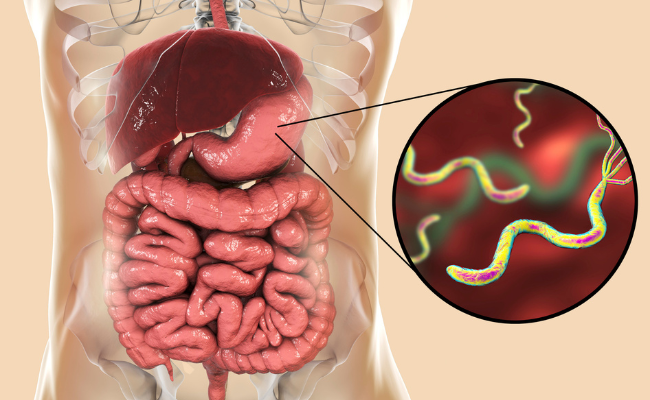How to Treat Piles (haemorrhoids)?
- December 15, 2023
- No Comments
What are Piles (Haemorrhoids)?
Piles, also referred to as haemorrhoids, are swollen blood vessels located in the rectum and anus, leading to discomfort and bleeding. They can manifest both internally and externally, causing pain and irritation. This common condition, affecting individuals of all ages, is influenced by factors such as straining during bowel movements, obesity, and a sedentary lifestyle. Hemorrhoids, commonly known as piles, share this characteristic with swollen veins in the anus and lower rectum, resembling varicose veins. These can occur internally (internal hemorrhoids) within the rectum or externally (external hemorrhoids) under the skin around the anus. Piles, or haemorrhoids, present as lumps both inside and around the anal region. While they typically exhibit natural improvement within a few days, adopting various measures is advisable to address and prevent the occurrence of piles.
Why Do Piles Occur?
Piles develop when the veins in the rectum and anus become swollen and inflamed. The most common cause is excessive pressure on these veins. Straining during bowel movements, often due to constipation or diarrhea, can contribute to the development of piles. Other factors include obesity, a lack of physical activity, and a poor diet that lacks fiber.
How to Identify Piles?
Identifying piles involves recognizing common symptoms associated with the condition. These may include pain or discomfort during bowel movements, bright red blood in the stool or on toilet paper, itching or irritation around the anal area, and a lump or swelling near the anus. Internal piles may not be visible, but they can cause symptoms like bleeding and discomfort.
Treatment Solutions for Piles:
- Lifestyle Changes: Making certain lifestyle changes can help prevent and alleviate piles. Increasing fiber intake by including more fruits, vegetables, and whole grains in the diet can soften stools and make them easier to pass, reducing the strain on the anal veins. Staying hydrated is also crucial to maintain soft stools.
- Regular Exercise: Engaging in regular physical activity can improve overall bowel function and prevent constipation, a common precursor to piles. Simple exercises like walking, swimming, or yoga can promote better digestion and help manage body weight, reducing the risk of developing piles.
- Hygiene Practices: Maintaining good anal hygiene is essential to prevent infection and irritation. Gentle cleaning of the anal area after bowel movements using moist wipes or mild soap and water can help soothe discomfort. Avoiding harsh or scented toiletries is advisable to prevent further irritation.
- Topical Treatments: Over-the-counter creams and ointments containing ingredients like witch hazel or hydrocortisone can provide relief from pain and itching associated with piles. These topical treatments aim to reduce inflammation and soothe the affected area. It's important to follow the instructions on the product and consult a healthcare professional if symptoms persist.
- Sitz Baths: Soaking the anal area in warm water, known as a sitz bath, can help alleviate pain and discomfort associated with piles. This can be done using a shallow basin or a specialized sitz bath available in drugstores. The warm water promotes blood flow to the affected area, reducing inflammation.
- Medications: In some cases, a doctor may prescribe medications to manage the symptoms of piles. These may include oral pain relievers, stool softeners, or medications that reduce inflammation. It's crucial to follow the prescribed dosage and consult a healthcare professional before taking any medication.
- Minimally Invasive Procedures: For more severe cases of piles, minimally invasive procedures may be recommended. Rubber band ligation involves placing a small rubber band around the base of the pile, cutting off its blood supply, and causing it to shrink and fall off. Sclerotherapy involves injecting a solution into the blood vessels to shrink the piles.
- Surgical Intervention: In rare and severe cases, surgical intervention may be necessary to remove or reduce the size of piles. Hemorrhoidectomy is a surgical procedure in which the piles are surgically removed. This is typically reserved for cases that do not respond to other treatments.
Benefits of Treating Piles:
- Pain Relief: Treating piles can provide relief from pain and discomfort associated with the condition. Addressing the underlying causes, such as constipation or inflammation, can significantly improve the overall quality of life for individuals with piles.
- Prevention of Complications: Timely treatment can prevent the progression of piles and reduce the risk of complications. Complications may include thrombosis (blood clots in the veins), infection, and excessive bleeding. Preventing these complications is crucial for long-term health.
- Improved Quality of Life: Managing and treating piles can lead to an improved quality of life. Individuals no longer have to endure the pain, itching, and bleeding associated with piles, allowing them to engage in daily activities more comfortably.
- Avoidance of Surgical Procedures: Early intervention and lifestyle modifications may eliminate the need for surgical procedures in many cases. Non-surgical treatments, such as lifestyle changes, medications, and minimally invasive procedures, can effectively manage piles and avoid more invasive measures.
- Enhanced Anal Hygiene: Treating piles often involves adopting good anal hygiene practices, which can contribute to overall cleanliness and comfort. Proper hygiene reduces the risk of infection and further irritation, promoting a healthier anal region.
- Prevention of Recurrence: Addressing the root causes of piles through lifestyle changes and medical treatments can help prevent the recurrence of the condition. Maintaining a healthy lifestyle and adopting preventive measures can contribute to long-term relief.











Comments (0)
No comments yet